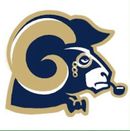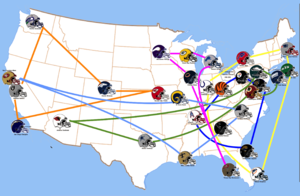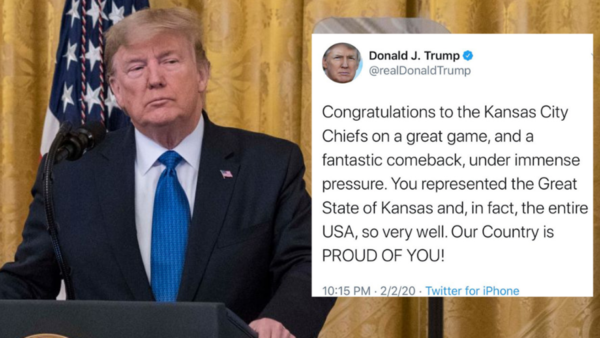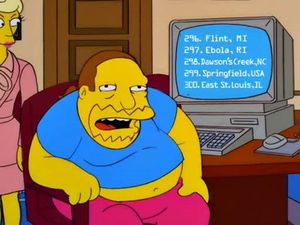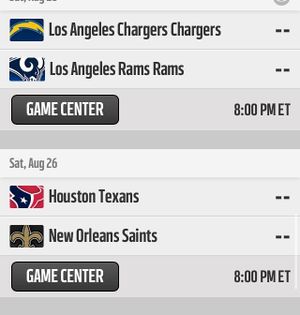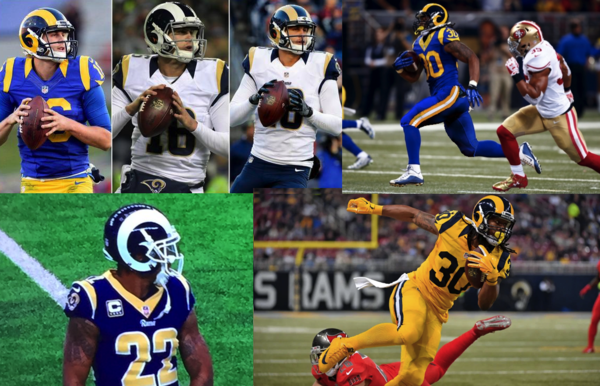Los Angeles Rams
This page is a work in progress |
~ Stan Kroenke
|
| ||
| City | Los Angeles, California | |
| Team colors | At least three clashing shades of blue, sometimes yellow, sometimes gold, sometimes a little white, sometimes a lotta white. | |
| Head Coach | Sean McVay | |
| Owner | Stan Kroenke | |
| General Manager | Les Snead | |
| Super Bowls | 1999 Kind of | |
| Nicknames | St Louis | |
The Cleveland Los Angeles St Louis Los Angeles Rams are a professional American Football team which has been based in three of America's classiest cities.
Cleveland Rams
While you might associate Ohio being grim and industrial, that was actually ideal for fledgling football teams, which were formed by big factory workers hurting each other for overtime pay.
The Cleveland Rams were one of a number of teams that sprang up in the Sixth City, and has the distinction of being part-owned by Bob Hope[1] at one point.
Comedy moments almost inevitably followed: first with the Rams 1945 NFL Championship being sealed with a safety, when Redskins Quarterback Sammy Baugh's pass ricocheted off his own goalposts - then on the goal line - through his own endzone,[2] second when the Rams immediately left town after winning the trophy, and third with the formation of the Cleveland Browns.
It should be noted that a Cleveland City Hall survey conducted between 1941 and 1945 found 64% of respondents said they would prefer to live in Cleveland than where they currently resided.[3]
Los Angeles Rams
Majority owner Dan Reeves had begun the moving process by taking out a map of America and marking off all the cities which would be more pleasant to live in than Cleveland. This proved to be exhausting work, so he simply cut the process short by saying "Let's go to LA".
One condition the NFL imposed on the Rams was that they include one black player in their roster.[4] Between 1933 and 1946, there wasn't a single black player in the NFL, largely because of stereotypes that black men were not big, fast, or scary enough to play football.
The Rams, with the natural rush of adrenaline that anyone would feel on leaving Cleveland behind, totally went nuts and signed two black guys for the 1946 season, Kenny Washington and Woody Strode.
To their credit, they made very few "Woody" jokes.
In 1949, the Rams became the first team to add a logo to their helmet, when halfback Fred Gehrke ignored the homophobic taunting of his teammates as he sat and painted cute yellow spirals on fifty leather caps using stencils.
The Rams played in three "NFL Championship games" between 1949 and 1955, winning one, but because these were not dubbed Super Bowls, most fans scrunch their noses and shrug if you count them as "winning".
The team enjoyed modest success in the 1960s and 1970s, even reaching a Super Bowl in 1979, but the novelty of pro-football in notoriously fickle Los Angeles was beginning to wear off: other more glitzy attractions, such as the Lakers, Charles Manson, psychedelic rock and cocaine were taking their toll on the Rams fanbase.
The sense of decline heightened with the team's move to suburban Anaheim in 1980s: anyone who has made the move from USC to Anaheim University will tell you that the journey does not exactly have a naturally euphoric vibe.
Ironically, while many white residents of LA were moving to Orange County to avoid black people and have more space, the Rams were taking black people to a smaller space: Anaheim Stadium's capacity was about 30,000 less than the Coliseum, giving the Rams a shot at selling the place out, and therefore having a chance to broadcast their games on TV.
The team's success levels in the 1980s and 1990s were not helped by a certain Joe Montana leading the San Francisco 49ers to Super Bowl after Super Bowl, and team owner Georgia Frontiere (a woman) decided to take the team to St Louis.
St Louis Rams
The decision caused consternation for a number of reasons.
Firstly, the Rams were playing in the NFC West, and while St Louis was classed as a Mid West city, the Rams now found themselves to the East of teams from NFC Central, AFC Central and NFC East. It should be noted that many football fans have resolved the issue by .
Secondly, St Louis might have had a rich history of blues and jazz, not to mention a brief history with the equally itinerant Cardinals (Chicago St Louis Phoenix Arizona), but more recently it had received nationwide fame as a murder-filled shithole.
Frontiere, perhaps arming herself with the logic that if Cleveland was a shithole and the Rams had had success there, then St Louis being an even bigger shithole could only mean one thing: Super Bowl success.
Quarterback Kurt Warner was not convinced, and was overheard in preseason training describing the town as "the biggest piece of shit on earth", a phrase which locals described as "a slight exaggeration".
In an almost exact carbon replica of the Rams' earliest years, the St Louis Rams started modestly before exploding into success after 5 years. When the team's offensive brilliance led them to Super Bowl XXXIV in 1999, Warner's slur on the city was playfully transformed by fans into "the best shithole on earth", "the best shit show on earth" and, finally, "the greatest show on turf".
The team returned to the Super Bowl two years later, to play the New England Patriots, which, if the Dallas Cowdboys are America's team, are kind of the opposite.
The Rams didn't know it then, but the 20-17 defeat they suffered that day was to usher in two decades of evil, evil Patriot dominance, in which an ageless quarter back, deflated balls, and the shadiest of hooded head coaches struck dread into the hearts of the 31 other constantly-moving franchises.
The Rams would never hit such heights again, and a playoff drought in the first decade of the 21st century gave way to an eerily familiar whining noise based around the word "stadium".
The team, now owned by Stan Kroenke, the famously dedicated owner of the Premier League's Arsenal, NBA's Denver Nuggets, NHL's Colorado Avalanche, MLS's Colorado Rapids, among others, began bitching about the facilities in the Edward Jones Dome. Kroenke filed a 65-page lawsuit, citing a number of issues including insufficiently long hot dog weiners, poor hygiene in the stadium's corporate swimming pools, and a lack of nearby coastline.
Los Angeles Rams
The NFL had gone from having the Rams and the Raiders based in LA in 1994, to zero teams for the following twenty years. The league, which has long sighed at the sight of its New York teams playing in New Jersey, and the immoveable franchises based in tiny, shitkicker towns, were desperate to get teams back to La-La Land.
When the league announced it would hear bids for the franchise spots from the Rams, the Raiders and the San Diego Chargers, LA-based Raiders fans began celebrating their team's certain homecoming. The Raiders had, comfortably, the biggest fanbase in the greater Los Angeles area, so it was a sure thing.
They had not counted on one thing: NWA. The league was incredibly concerned by photos which had surfaced from 1992, showing Ice Cube, Eazy E, and Dr Dre sporting distinctive Raiders caps. Something about the black color of the caps attracted gang-affiliated rappers in a way the Anaheim Ducks could never hope to. NFL Commissioner Roger Goodell heard the track Fuck tha Police and immediately discounted the Raiders bid.
To make up for denying the fans the team they wanted back in LA, Goodell offered them two teams they didn't want, and forced the teams to commit to playing in the same stadium, so Raiders fans could watch up to 16 games a year of LA teams not called the Raiders.
The Rams moved first in 2016, and duly won over their doubters, finishing 4-12. The season was such a success that the Chargers moved the following year, playing their home games at the 30,000-seater StubHub Center, home of a soccer team.[5]
That year, both the Rams and Chargers earned winning records, with the Rams even making the playoffs, despite the old problem of being unable to fill the Coliseum leading Catholic fans to believe the team was effectively performing acts of penance in some kind of football purgatory.
In 2018, the joke became somewhat more serious, with both teams making the playoffs. There were so few LA Chargers fans that the media was forced to ask old San Diego fans if they would be rooting for the new team in the event of them reaching the Super Bowl. The Rams, meanwhile, did make it to the Super Bowl, only to lose to an ageless quarter back and the shadiest of hooded head coaches.
Uniform blues
Despite being trailblazers in the painted helmet department, the Rams have endured serious problems with their uniform since moving back to LA. There are a number of factors at play:
- The 1960s LA Rams played in navy and white, with white horns on the helmet
- The 1980s LA Rams played in royal blue and yellow, with yellow horns on the helmet
- The St Louis Blues played in navy and gold, with golden horns on the helmet
- The NFL, despite acquiescing the 1,500-mile move west, insist that the Rams do not change their color scheme until 2020, presumably because that would be disloyal to the fanbase. Of St Louis
- They play in blue and so do the Chargers, not ideal when two teams are trying to thrash out a unique identity in a demanding market
As a result, the Rams have worn roughly 117 different uniform combinations in the ensuing years, with the team attempting to use old helmets which clashed with St Louis colors, existing helmets which clashed with old colors, as well as the extra fun of throwback uniform day and color rush day.
Google used the following image as a recruitment tool, asking candidates how many non-matching shades of blue and yellow they saw, to test perception abilities.
